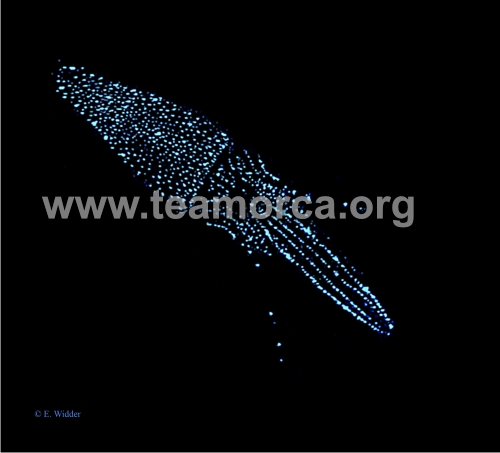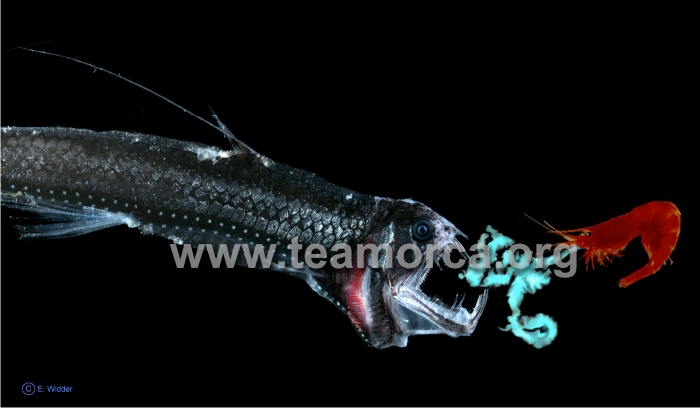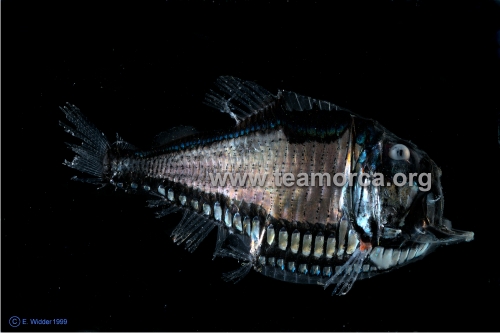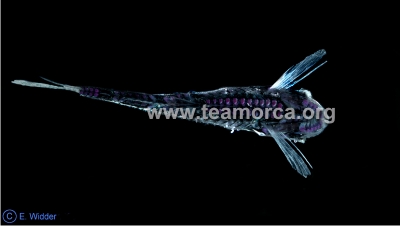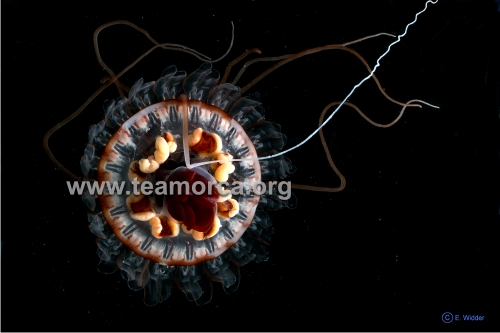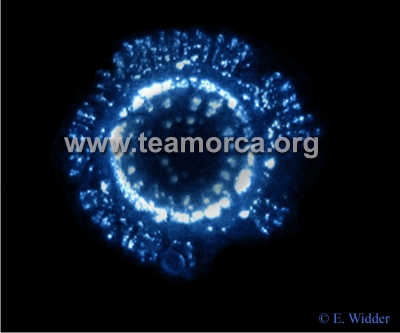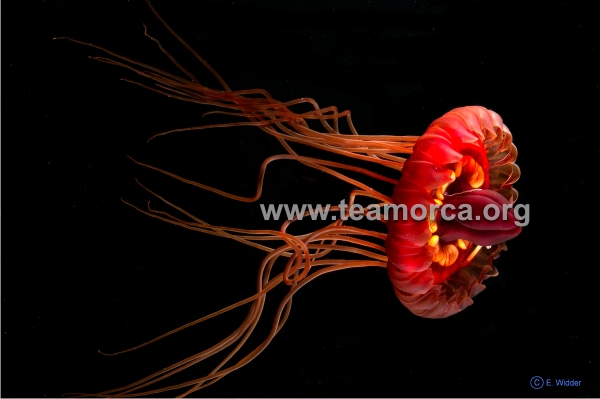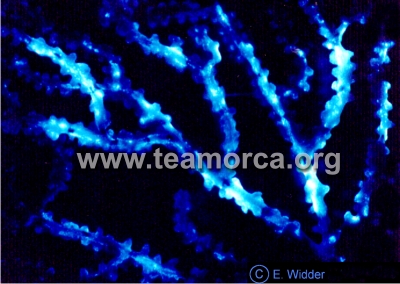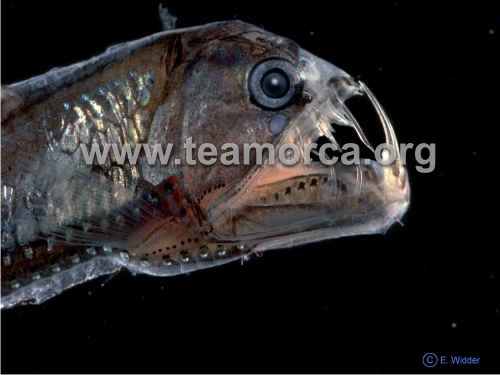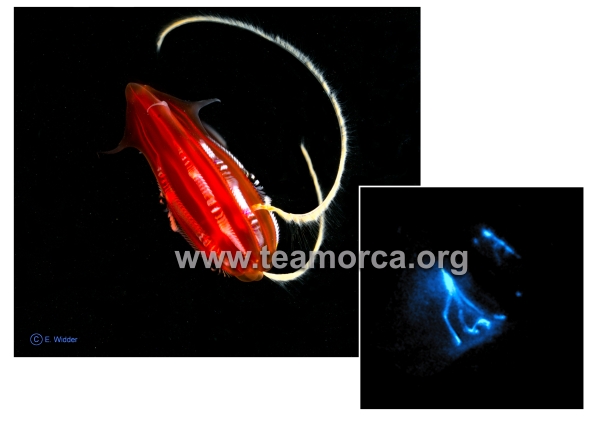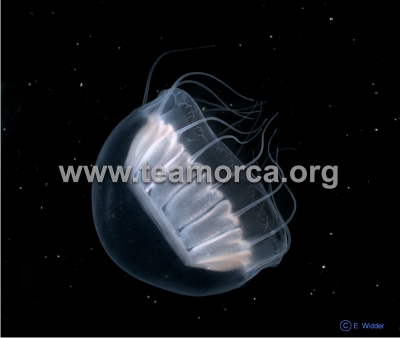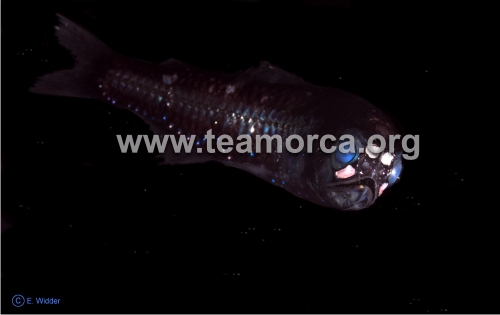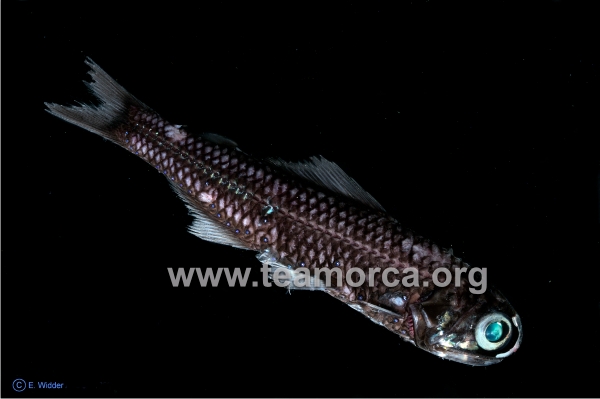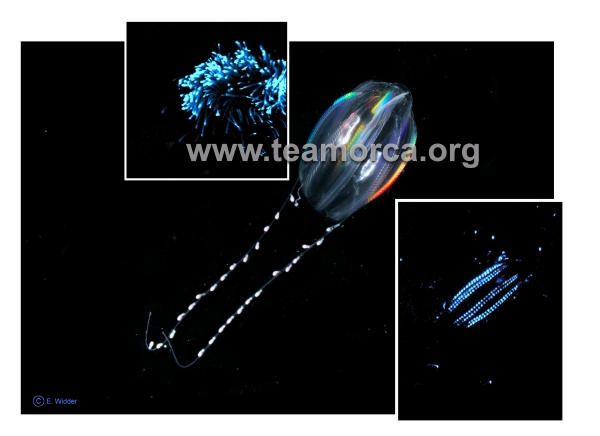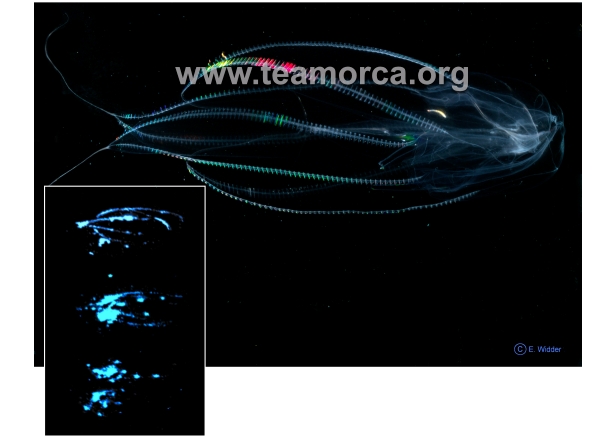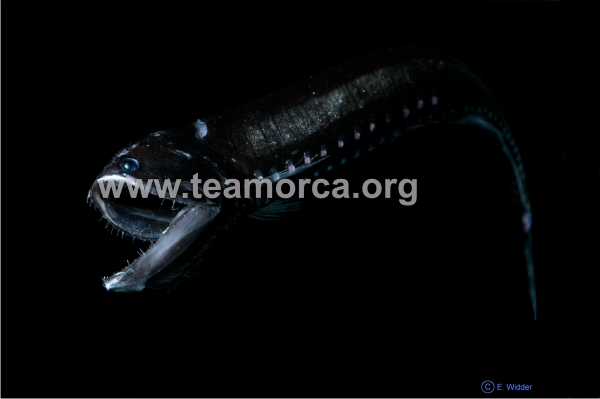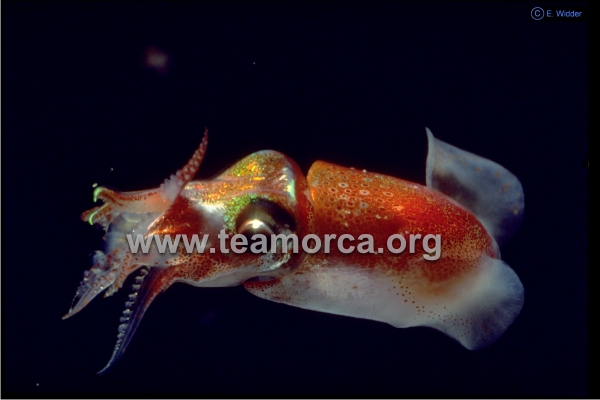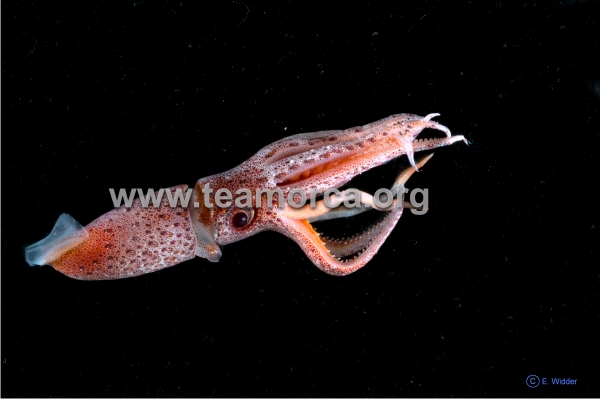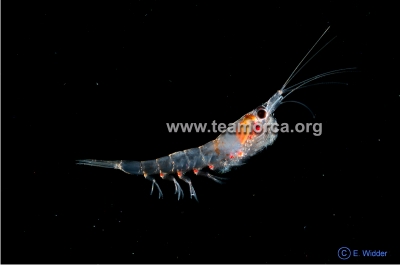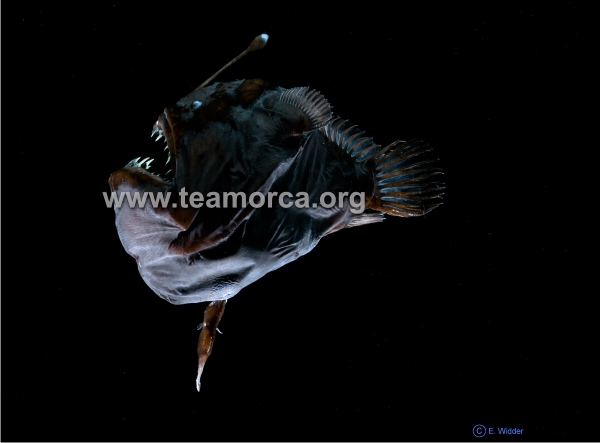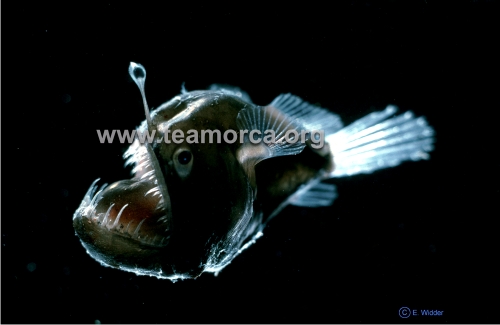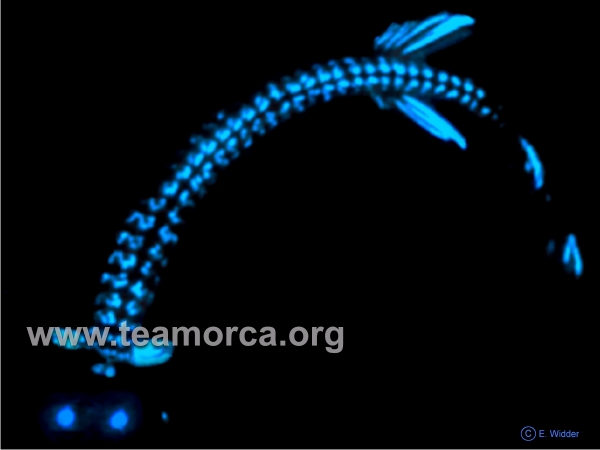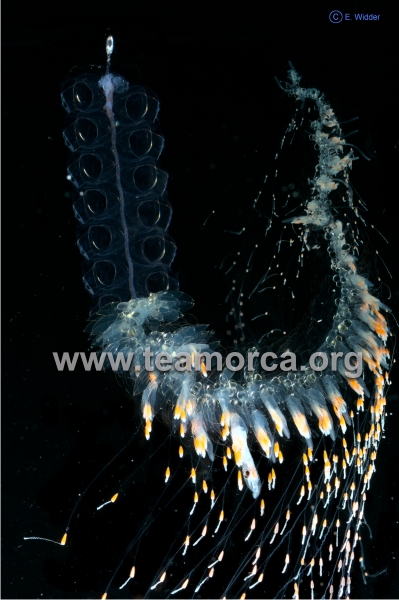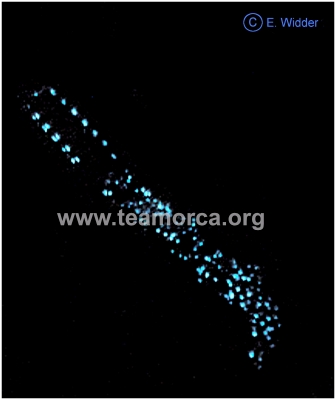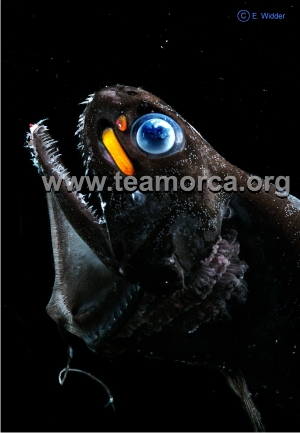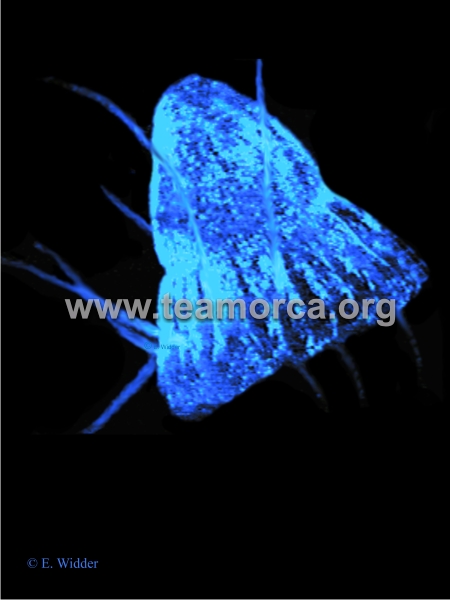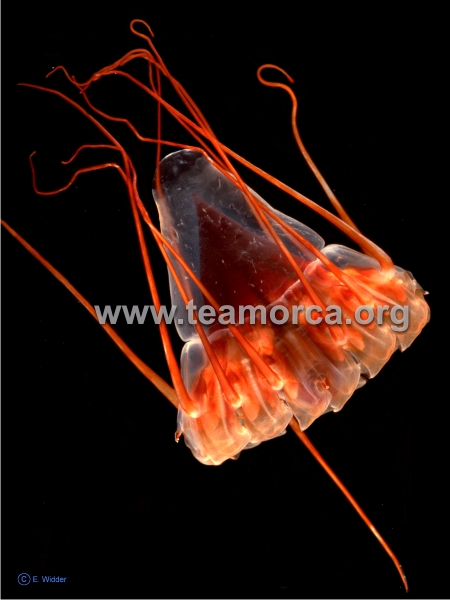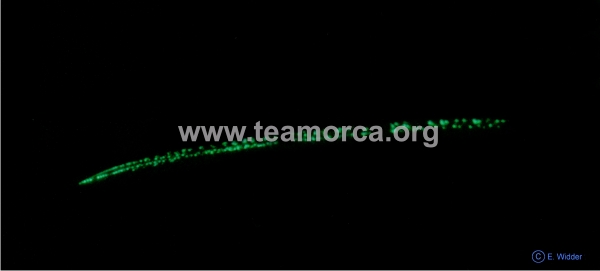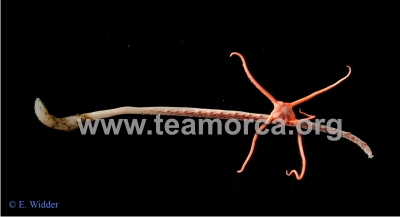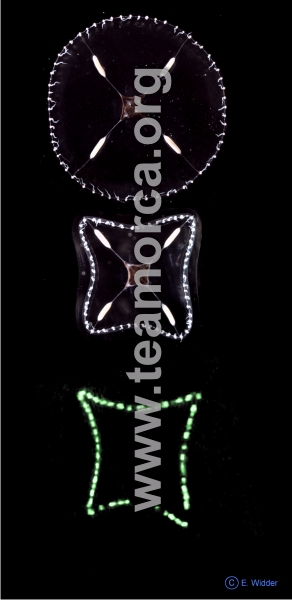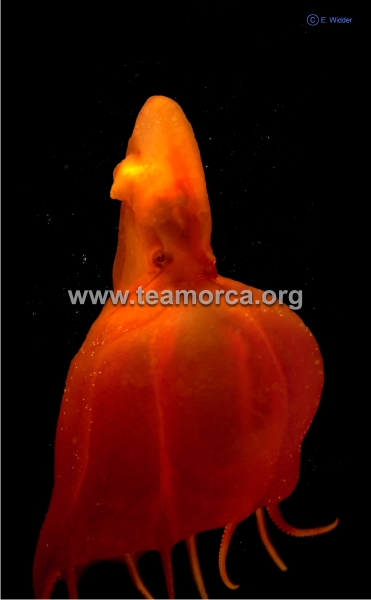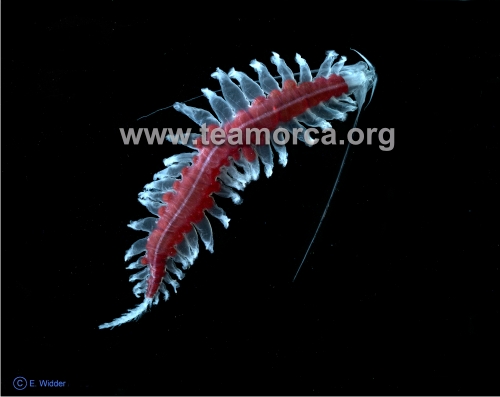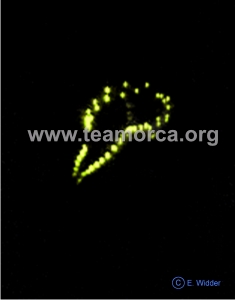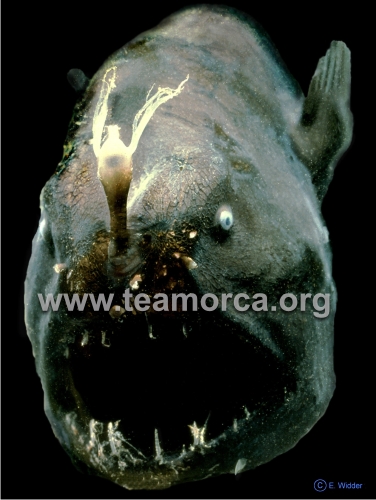Bioluminescence
For a human, the deep sea is as alien as deep space.
Go down several hundred feet into the ocean and the world is dark blue. Another thousand feet and your surroundings have faded to a dim bluish-gray twilight. There is enough illumination for a person to see at that depth, but too little for photosynthesis. Descend through this twilight zone another thousand feet and it is eternal night.
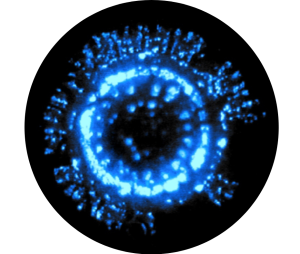
The darkness is not truly dark, however, and the seeming emptiness is actually full of secret messages.
Most deep-sea animals use chemicals to create bioluminescent light, piercing the gloom with signals in blue and green, red and yellow. When it comes to understanding who is flashing whom and what it all means, though, we might as well be trying to eavesdrop on an extraterrestrial conversation.
For decades marine biologists have gotten glimpses of this glittering life by casting nets and retrieving deep-sea organisms. More recently they have lowered cameras on cables and measured the bioluminescence on display beneath the waves. Using special diving suits and submersibles, they have even entered the habitat of deep-sea organisms, watching in awe as the water world lit up with bursts of color that sparkled like fireworks. From these studies researchers have been able to glean a few basic details about bioluminescence. They know that luminescent displays signal the best mates, point the way to food, and help evade danger. The bioluminescent hatchetfish, for instance, uses its light to hide from predators by mimicking sunlight filtering through the water; the shining tubeshoulder uses bioluminescence to startle predators.
But understanding the meaning of the flashes produced by the wide swath of bioluminescent species has been impeded by one simple fact: Diving suits and submersibles frighten sea organisms, disrupting their natural behavior exactly when scientists are there to observe it. Without the ability to watch sea life undisturbed in its habitat, we have been unable to piece together the meaning of this enigmatic language of light.
That, however, is no longer an issue, thanks to ORCA’s Dr. Edie Widder, a cofounder of the organization and a specialist in marine bioluminescence. She has developed a spy camera for the deep, dubbed Eye-in-the-Sea™ that is opening a window on this hidden world. The Eye sits on the ocean floor and quietly records bioluminescent organisms in their natural habitat without scaring them.
Below the Edge of Darkness: A Memoir of Exploring Light and Life in the Deep Sea, Edith Widder, Ph.D.
Learn more about this specialty of the deep by joining Dr. Widder on a virtual bioluminescence exploration dive.
TED Talks: The Weird Wonderful World of Bioluminescence
Washington Post Article Shines Light On Bioluminescence
Bioluminescence is as widespread as it is wild and mysterious. Jack-o’-lantern mushrooms, flashlight fish and fireflies are among the multitude of organisms that bioluminesce. Scientists are still finding previously unknown examples of the phenomenon, especially at sea, where bioluminescent species are particularly varied and abundant. In parts of the ocean, 80 to 90 percent of sea creatures make light or harbor microbes that do so. Read the story.
Eye-in-the-Sea to be Included in Giant Squid Hunt
After almost a year in the depths of the Monterey Canyon, ORCA’s moored Eye-in-the-Sea camera (world’s first deep-sea web cam) is on dry land for awhile as we begin to analyze the enormous stores of digitized video data it produced. Over the summer, student intern Gregor Bwye from the University of Aberdeen in Scotland, has turned up some exciting results. Read the story.
Bioluminescence Review Published in Scientific American
Marine biologists estimate that between 80 and 90 percent of deep-sea creatures are bioluminescent – they produce light through chemical processes. Like the deep sea itself, the reasons why many of these organisms flash, twinkle and gleam remain mysterious to science. But in the past decade marine biologist Edith “Edie” Widder has tackled more puzzles about undersea bioluminescence than any other researcher. Read the article.
Bioluminescence Images
Please contact ltracy@teamorca.org with the image number/name for licensing.
